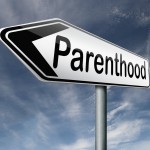
Depression in late adolescence is a major public health concern, not least because it is strongly predictive of persistent, adult depression, which can have a severe effect on socioemotional functioning, education and employment. Increasingly, depression research is turning its attention to the matter of prevention of depression rather than exclusively focusing on treatment options and the identification of early-life risk factors is a vital topic of investigation.
Evidence suggests that postnatal depression (PND) is connected to problematic child development because of the negative effect of depression on caregiving at a time when a child is particularly dependent on parents, but that this risk is moderated by socioeconomic status. However, the evidence for an independent association of PND with offspring depression is inconsistent, sample sizes have been small and studies have focused on offspring up to the age of 16 years.
Emerging evidence is questioning the near-exclusive focus on PND and offspring depression; antenatal depression (AND) has been associated with independent risks for child development and a key question asks whether the mechanisms for the transmission of risk from mother to fetus differ from those related to maternal depression during the child’s life.

This study set out to investigate the links between maternal depression and the risks of depression in the offspring
This first-of-its-kind, large-scale, prospective cohort study set out to answer the following questions:
- Are maternal AND and PND associated with offspring depression at age 18 years?
- Do AND and PND have independent effects on offspring depression? If so, are the risks of different magnitude?
- Does maternal education moderate the effects of PND but not AND?
- Are the effects of AND, but not PND, unique to mothers?
Methods
The research team, led by Dr Rebecca Pearson from the University of Bristol, explored data gathered from the singleton child sample of participants from the Avon Longitudinal Study of Parents and Children (ALSPAC), a long-term health research project which recruited more than 14,000 mothers during pregnancy in 1991 and 1992. They conducted a prospective investigation of data from more than 4,500 parents and their adolescent offspring of associations between symptoms of AND and PND with offspring depression at age 18.
- Symptoms of maternal depression were measured using the Edinburgh Postnatal Depression Scale.
- Mothers completed questionnaires concerning their and their partner’s education at 32 weeks of pregnancy.
- Offspring depression was measured using the Clinical Interview Schedule – Revised.
- Maternal characteristics identified in previous studies as confounding variables were obtained from maternal questionnaires administered antenatally and during the child’s life.
Results

The children of women who were antenatally depressed were 1.28 times more likely to to have depression at age 18 years
- Antenatal depression was found to be an independent risk factor for offspring depression at the age of 18 (Odds Ratio (OR) 1.28; 95% Confidence Interval (CI) 1.08 to 1.51; P = .003).
- Postnatal depression was also a risk factor for mothers with low education (OR 1.26; 95% CI 1.06 to 1.50; P = .01).
- There was little association for more educated mothers (OR 1.09; 95% CI 0.88 to 1.36; P = .42).
- Maternal education moderated the effects of postnatal but not antenatal depression.
- Paternal antenatal depression was not associated with offspring depression while postnatally, paternal depression showed a similar pattern to maternal depression.
Conclusions
- This is the first study to test the effects of AND and PND on offspring depression at age 18 years.
- Although the study does not test the mechanisms of the transmission of depression from mother to adolescent, the findings provide evidence that the AND and PND pathways differ in their effects.
- Crucially, the pathway of maternal AND does not wholly operate through AND continuing into the postnatal period.

Treating antenatal depression could help to prevent depression in offspring. Yoga in the park anyone?
- Maternal education is protective in the context of PND; in contrast, the absence of moderation of maternal education antenatally suggests that AND operates through the biological consequences of depression in utero.
- The study shows that treating maternal antenatal depression could prevent offspring depression during late adolescence and adulthood.
- Efforts targeted at less advantaged mothers postnatally may be most effective.
Strengths and limitations
- Limitations included the fact that adolescents who attended the assessment at age 18 were likely to come from higher SES families; although this selective attrition is not easily explained, it also suggests that the strength of the association between maternal and offspring depression may in fact be underestimated.
- Key strengths include the large sample, long-term follow-up, repeated measures of maternal depression and availability of confounding and moderating variables.
Links
Pearson RM, Evans J, Kounali D, Lewis G, Heron J, Ramchandani PG, O’Connor TG, Stein A. Maternal Depression During Pregnancy and the Postnatal Period: Risks and Possible Mechanisms for Offspring Depression at Age 18 Years. JAMA Psychiatry. 2013 Oct 9. doi: 10.1001/jamapsychiatry.2013.2163. [Epub ahead of print] [PubMed abstract]
Avon Longitudinal Study of Parents and Children (ALSPAC) website.


@Mental_Elf thanks so much for sharing. Just added it to my @RebelMouse https://t.co/RD44ilj88D
“@Mental_Elf: Treating antenatal depression could prevent offspring adult depression. Impact of ante V’s post-natal http://t.co/2gJ82m82sE”
Debut blog from @nikkinewhouse on the relationship between maternal depression and adult depression in the offspring http://t.co/u8hzM27hIx
Blog by @nikkinewhouse on maternal depression and offspring depression: http://t.co/HyC8ncbyrC Research by @RebeccaMPearson at @BristolUni
Thanks @MarcusMunafo Hi @RebeccaMPearson We’d love to hear what you think of @nikkinewhouse’s blog: http://t.co/77gnv6z2YH
Thanks @Mental_Elf @MarcusMunafo @nikkinewhouse nice clear summary of our complex paper thank you! the importance of antenatal depression
@RebeccaMPearson @Mental_Elf @MarcusMunafo Thanks for the feedback! Fascinating topic.
Treating antenatal depression could prevent offspring adult depression http://t.co/tvTz7TFFBl via @Mental_Elf
Treating antenatal depression could prevent offspring adult depression http://t.co/98FrjV1OLm via @sharethis
My debut blog with @Mental_Elf is live! The relationship between maternal depression & offspring adult depression. http://t.co/rpgnBXa056
RT @Mental_Elf: Maternal education moderates effects of postnatal but not antenatal depression http://t.co/u8hzM27hIx
Treating antenatal #depression could prevent offspring adult depression – The Mental Elf http://t.co/IIarV2d1iU
“@Mental_Elf: Maternal education moderates effects of postnatal but not antenatal depression http://t.co/s6rftH345k” #PPTalk #PND #perinatal
Check out @nikkinewhouse’s explanation of recent paper exploring ante/postnatal and offspring depression @Mental_Elf http://t.co/UKrP5B0otC
Emerging evidence questions focus on postnatal depression: new prospective cohort study in @JAMAPsych http://t.co/u8hzM27hIx
Disadvantaged mothers need most support postnatally http://t.co/u8hzM27hIx
In case you missed it earlier: Treating antenatal depression could prevent offspring adult depression http://t.co/u8hzM27hIx
RT .Mental_Elf: Never Forget earlier: Treating antenatal depression could prevent offspring adult depression http://t.co/vLKkusAbYF
Mental Elf: Treating antenatal depression could prevent offspring adult depression http://t.co/64tfgJkzMA
You say it ‘could’. Then again it might not and ‘could’ cause worse harm. Go away Mental Elf!!
People who present with depression will often talk about the heritability, but rarely will they offer that their mother might have been depressed during pregnancy or post-partum. We ask, and they still don’t know. So awareness is key. Thanks for this study and posting the outcomes.